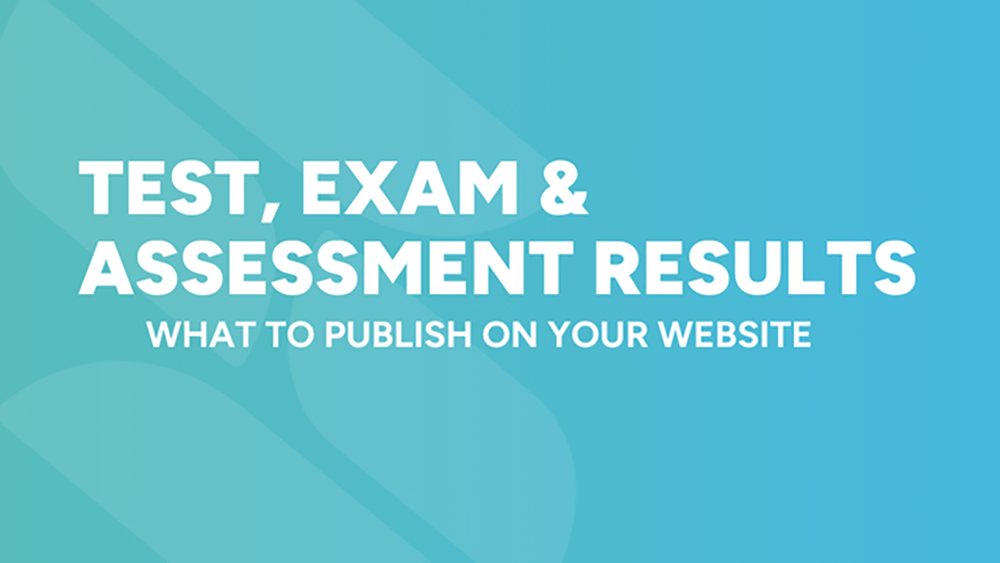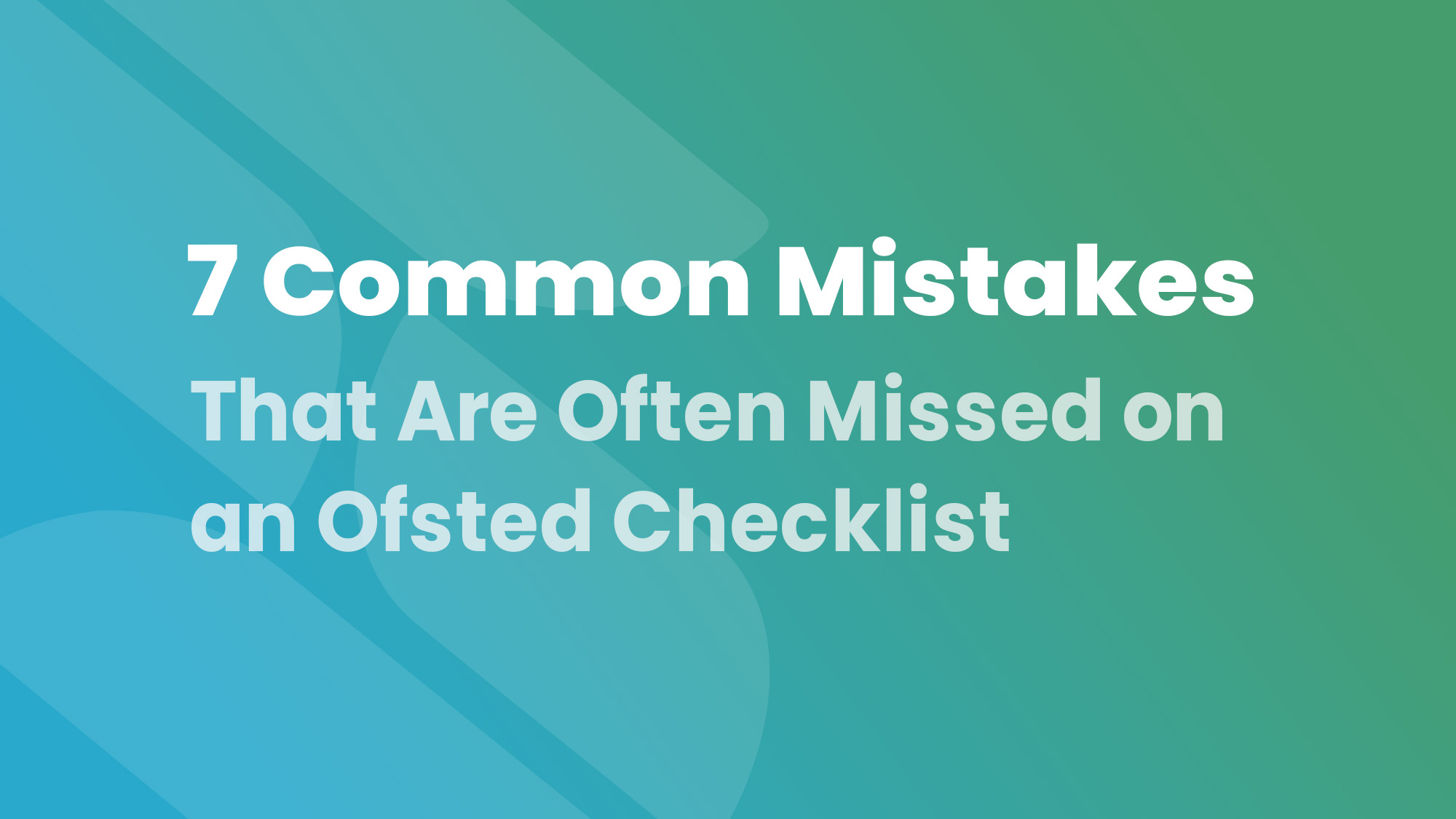Test, Exam, and Assessment Results – What to Publish on Your School Website
Test, Exam, and Assessment Results – What to Publish on Your School Website

Schools, academies, and colleges must publish performance measures to provide transparency about their exam and assessment results. While some requirements for academies are marked as “should” by the DfE, we strongly recommend treating them as mandatory to ensure clarity, consistency, and best practice across all schools.
This blog outlines what schools must publish, how to structure performance data effectively, and best practices for making the results page informative and engaging.
Why Publish Your School’s Performance Data?
-
Compliance – Schools must publish links to their results on the Compare School and College Performance Service.
-
Transparency – It is important for parents and prospective students to have access to exam and assessment data, as they use this information to choose a school.
-
Context & Celebration – Results are more meaningful when accompanied by an explanation and celebrations of student success.
Schools that effectively present their exam results not only meet compliance but also use this information to demonstrate their strengths and showcase student achievements.
What Schools and Academies Must Publish?
All Schools, Academies, and Colleges Must Publish:
✔ A link to the Compare School and College Performance Service (Find School and College Performance).
✔ A link to their specific performance page on the service.
Key Stage 2 (Primary Schools with Year 6 Pupils)
✔ Maintained primary schools must publish their most recent Key Stage 2 performance measures, as published by the Secretary of State.
✔ Academies should publish these measures.
These measures include:
-
Percentage of pupils achieving the expected standard in reading, writing, and maths (combined).
-
Percentage of pupils achieving a higher standard in reading, writing, and maths (combined).
-
Average scaled scores in:
-
Reading
-
Maths
-
National curriculum assessments, including SATs, are used to evaluate pupils’ knowledge, skills, spelling, and punctuation at the end of primary school. Teacher assessments and marking of pupils work provide important feedback on learning and progress in each subject. Tests and test papers are used alongside teacher assessments to provide a summary of each pupil’s progress, and teachers use specific terms to guide feedback and support learning. Spelling and punctuation are assessed as part of national curriculum assessments, and teachers provide targeted feedback to improve these skills. Assessment results are reported by subject, and teachers use marking and feedback to support pupil progress.
The government requires schools to publish public data on national curriculum assessments. The last available public data may no longer reflect current performance due to the uneven impact of the pandemic in previous years, making direct comparisons between one school and another less reliable.
🚨 **Note:**Progress scores in reading, writing, and maths are not required for the 2023-2024 and 2024-2025 academic years due to the lack of a Key Stage 1 baseline from Covid-19 disruption.
Key Stage 4 (Secondary Schools with Year 11 Pupils)
✔ Maintained schools must publish their most recent Key Stage 4 performance measures, as published by the Secretary of State.
✔ Academies should publish these measures.
These measures include:
-
Progress 8 Score.
-
Percentage of pupils achieving a grade 5 or above in GCSE English and Maths (combined).
-
Attainment 8 Score.
-
Percentage of pupils staying in education or employment after Key Stage 4.
-
Percentage of pupils entered for the English Baccalaureate (EBacc).
-
EBacc average point score (APS).
Academies use performance data to showcase their achievements in subjects at this level, and measures such as Progress 8, Attainment 8, and EBacc reflect students’ ability to apply knowledge and skills across a range of subjects. At the end of Key Stage 4, data is published on the percentage of students who enter further eduction or enter employed, and the percentage of students stay in education or employment. Assessment results are reported by subject, and teachers use marking and feedback to support pupil progress and learning.
Key Stage 5 (Sixth Forms, 16–18 Provision, and FE Colleges)
✔ Secondary schools with sixth forms must publish their most recent 16–18 performance measures.
✔ Academies and FE colleges with 16–18 students should publish these measures.
These measures include:
-
Progress (Value Added) Measures*(Not required for 2022-2023)*.
-
Attainment Measures.
-
Retention Measures.
-
Destination Measures*(percentage of students continuing in education or employment after 16–18 study)*.
College performance data is affected by the pandemic, and the government advises caution when interpreting results from previous years due to the uneven impact on academic year outcomes.
Note: Schools are not required to publish English and Maths progress measures for 2022-2023 or 2023-2024.
How to Publish Performance Data Effectively
1. Create a Dedicated “Results & Performance” Page
-
Title the page clearly – e.g., “Exam & Assessment Results” or “School Performance Data”.
-
Ensure the page is easily accessible from “Key Information” or “About Us.”
2. Include Direct Links to Official Performance Data
-
Provide a link to your school’s page on the Compare School and College Performance Service.
-
Include a link to your most recent performance report on this service.
Example Statement:
“You can view our latest exam and assessment results on the Compare School and College Performance Service by visiting our school’s page here. To access the full public data set, simply click the link provided.”
3. Present Your School’s Results in a Clear Table Format
A table format makes exam results easier to read and compare. The table below provides a summary of test exam assessment results by subject, organized to show performance in different subjects. All data is sourced from official public data sources.
Example Format:
Key Stage 2 Results (2023-2024)
|
Measure |
School % |
National % |
|---|---|---|
|
Pupils achieving the expected standard in reading, writing, and maths |
75% |
65% |
|
Pupils achieving a higher standard in reading, writing, and maths |
20% |
10% |
|
Average scaled score – Reading |
105 |
104 |
|
Average scaled score – Maths |
107 |
105 |
Key Stage 4 Results (2023-2024)
|
Measure |
School % |
National % |
|---|---|---|
|
Progress 8 Score |
+0.45 |
0 |
|
Grade 5+ in GCSE English & Maths |
68% |
50% |
|
Attainment 8 Score |
55 |
50 |
|
Staying in education or employment |
92% |
89% |
|
EBacc Entry Rate |
80% |
65% |
|
EBacc APS |
4.8 |
4.2 |
4. Provide Context and Celebrate Success
Rather than just listing the numbers, explain what they mean. Highlight improvements and areas of success.
Example Statement:
“We are delighted that our Attainment 8 score has increased by 2 points this year, reflecting the hard work and dedication of our pupils and staff. Our Progress 8 score of +0.45 places us well above the national average.”
5. Showcase Student Achievements
Bring the data to life by including:
-
News stories celebrating student success – Link to articles about exam results day.
-
Photos from results day – Capture the excitement and achievements of pupils.
-
Quotes from students and staff – Share testimonials about their experiences.
Best Practice: Schools that contextualise their results appear more engaging, positive, and transparent.
Example of Best Practice for Performance Data Reporting
Exam & Assessment Results – 2023-2024
📄 Download Our Full Performance Report (PDF)
📄 View Our Performance on the DfE Website
This section provides a summary of our school’s current performance based on the latest test exam assessment results.
At [School Name], we are committed to ensuring that all students achieve their best potential. Below are our most recent exam and assessment results.
Key Stage 4 Performance Highlights:
✔ Progress 8 Score: +0.45 (above national average)
✔ Grade 5+ in English & Maths: 68% (higher than last year)
✔ EBacc APS: 4.8
🔗 Read Our GCSE Results Day News Story
For further details, visit our Exam & Assessment Results Page.
Next Steps for Schools and Academies
-
Publish direct links to your school’s Compare School & College Performance page.
-
Use structured tables to present results clearly.
-
Include contextual information and celebrations of success.
-
Provide support to students in preparing for tests and understanding their assessment results.
-
Ensure the data is updated annually.
For further guidance, explore our School Website Requirements Guide.
By publishing clear, structured, and engaging performance data, schools can meet compliance while celebrating student success and providing valuable insights to parents and stakeholders.










